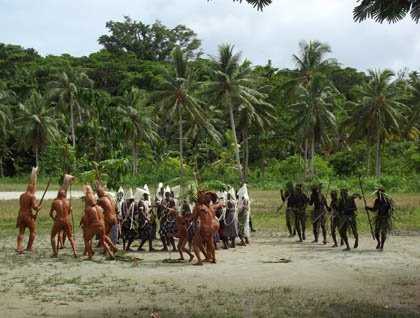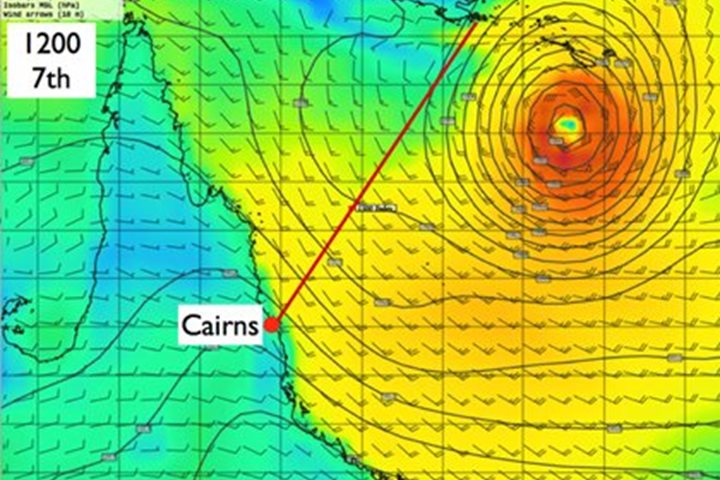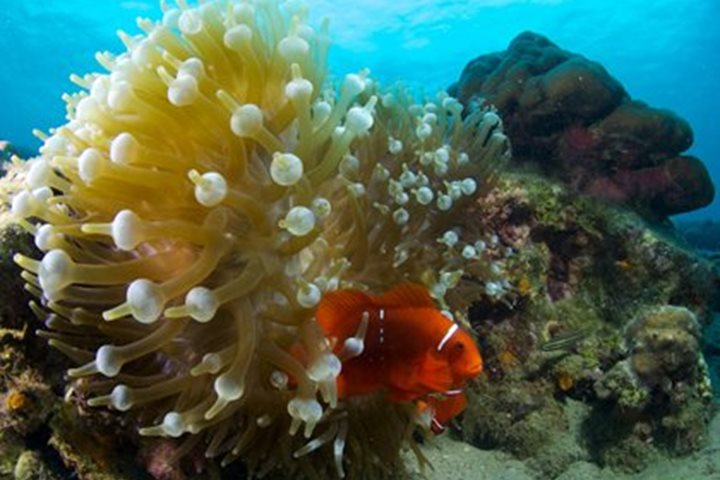We enjoyed a relaxing morning at sea, watching flying fish, various sea birds, and some marine mammals (including false killer whales and bottlenose dolphins) as our inaugural voyage continued on its northward journey, bringing us into the waters of the Solomon Islands. The port-o-call today was the island of Santa Ana, a small, raised coralline island located at the southeastern end of the archipelago. And here we enjoyed an amazing welcome from very enthusiastic people. As we landed on a sparkling white sand beach, looking at the floral decorations inviting us into the village, angry warriors erupted out of the surrounding trees carrying spears and lethal-looking slashing clubs, threatening us all with instant death. As it turned out, this is the traditional welcome to show esteemed guests that the indigenes could destroy us if they want to, but choose not to - instead valuing our trading potential, possible clan alliances, friendly encounters between families, etc. Phew!
The island contains three villages and has a total population of between 3,000 and 3,500 (no one really knows, because there are lots and lots and lots of children to account for), and it seemed everyone was at the host village for our visit. We learned later the schools had an early dismissal to allow them to join in on the welcome. So, everyone was there! After we were greeted by the various chiefs and big men, we all walked through the beautiful, tree-shaded village to a large field for what was nothing less than an extravaganza of music and dance. The musical performance was quite different from anything we had thus encountered and included a very accomplished band of pan pipers, as well as a master of the famous Solomon Island bamboo piano. The costumes and body painting exhibited in the dances were also impressive and were all the more photogenic by having the dancers perform in an open field. The first few traditional dances were designed for large feasts both in honor of high chiefs and as provocative wedding gatherings, but the highlight was a dramatic reenactment dance known as the Aimatawa-Aifonofono. This recounted an ancient event, either real or imagined, when Polynesian warriors (covered in red ocher mud) came to the island and tried to steal some of their women and children. However, the mighty Melanesian warriors (covered with black charcoal mud) saved the day and drove them off. (See Figure 1.) The crowd of local children got so worked up over this performance they poured onto the field to help drive away the Polynesians. Everyone got caught up in the moment, even us.
The local populace had lots of interesting and beautiful wood carvings and various artifacts for sale, so lots of money changed hands. A little later in the afternoon, many people opted to go snorkeling at the reef edge bordering the entrance to the main lagoon. A few of us decided to walk to the far side of the island to visit one of the other villages and have a look at two sacred spirit houses where chiefs from long ago are interred – a very important site honoring the old ways of ancestral spirit worship. It was an energetic hike to get there, on a good coralline track that took us over the central plateau, and gave us a chance to enjoy much more of this appealing, lush island. The far village, located on the windward shore, turned out to be even more traditional in the sense that there were no corrugated iron roofs or concrete pillars in evidence, and it was obviously much less affluent and prosperous than the village where we originally landed. However, it is even more photogenic, if that is possible. (See Figure 2.) Everyone returned to the ship by sunset and we steamed out of the lagoon with a cocktail party on the upper deck.







